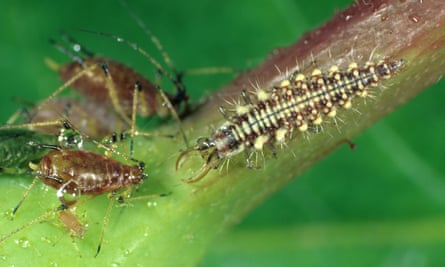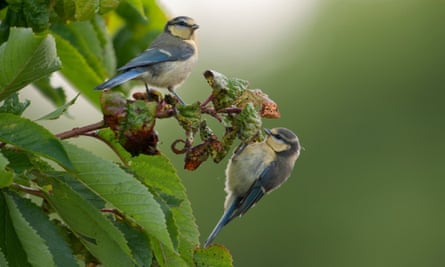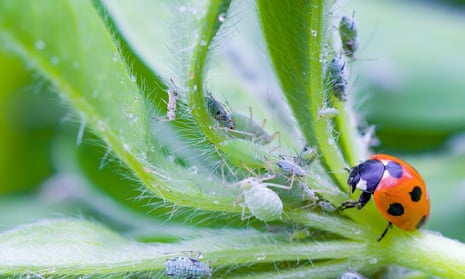I have aphids. Lots of them. This is the way; you never have just a few. Spring was full of soft, sappy growth, which is manna to these sap suckers, that are also known as blackfly and greenfly. Also, aphid mothers are quite something. The females are parthenogenetic during the summer, which means they can give birth to live young without being impregnated: pop, pop, pop, with each one starting to suck sap immediately.
If you see about 10 aphids on a plant one day, the next there may be double that. Before you know it, there will be an infestation. If the plant is weakened or overcrowded, the aphids can give up ambulatory life and create winged versions to fly to better conditions. Winged and wingless aphids are often present on the same plant.

Aphids have needle-like mouths that tap into the sweet, sugary sap. This gives rise to another problem: honeydew. This is aphid excrement. If there are enough aphids, the byproduct is sooty mould, infecting leaves, your car, and anything else sitting under their latrine, with a fungus that turns the whole area black. Ants often farm aphids for this honeydew, and certain foragers will tell you that a lime leaf covered in a fresh smear of the stuff is a delicacy – I might be one of them.
Aphids suck (it never gets old, that pun) and those dirty needle mouth-parts often transmit diseases and viruses, so they can’t be ignored. Such abundancy, though, means that there are many that like to dine on them. Ladybirds, both adult and larvae, hoverfly larvae, lacewing larvae, parasitic wasps, blue tits, and even fungus, will make light work of the hordes.

In the end, it’s their honeydew that undoes their bid for world domination. It is laced with kairomones, chemicals that, unwittingly for the aphid, attract predators. Large colonies of aphids appear in spring and if you wait patiently, the honeydew appears and, shortly after that, the ladybirds, lacewings, hoverflies and wasps. They feed, they reproduce, and subsequent generations of beneficial organisms will provide sustained pest control for the rest of the season.
All you have to do is be patient, not overly tidy (long grass, dead wood and old leaves are important habitats), and promise not to reach for the bug killer, nor squash anything you don’t recognise. Ladybirds and lacewing larva are the good guys, as are hoverflies, so let them be. Plant asters and umbels to attract their parents, who rely on pollen and nectar to reproduce, and let nature take her course – free pest management is on its way.

Comments (…)
Sign in or create your Guardian account to join the discussion